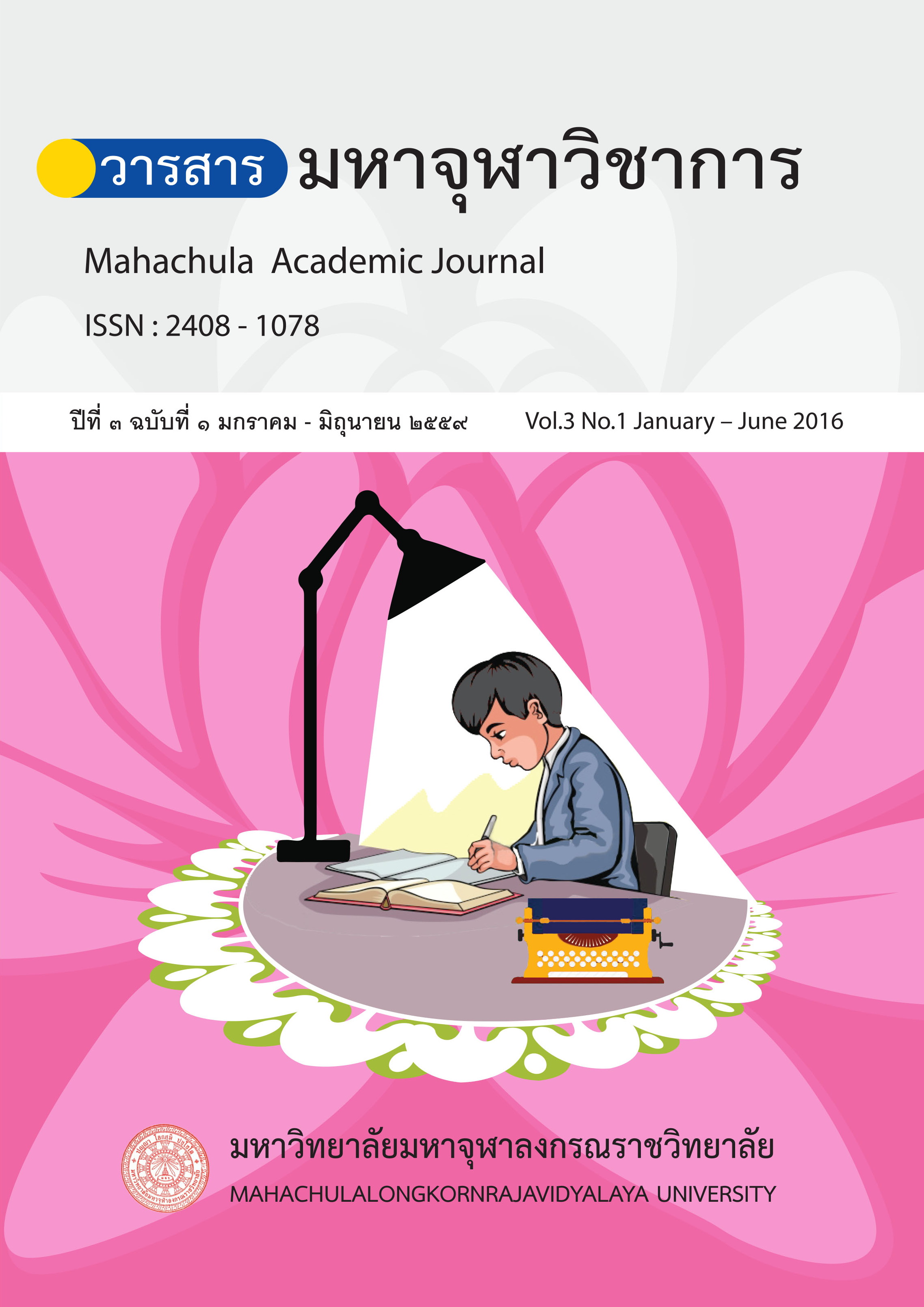Analytical Study of Human Beginning Points: A Buddhist View
Main Article Content
Abstract
Several studies have been conducted in order to find out when human life actually begins. This phenomenon has been the topic of debate among different groups of people but a consensus has not been reached yet. Scientists, clergymen, the secular and common people believe differently as to when life actually begins.
Science advocates that life begins when the spermatozoon from the male and the oocyte from the female meet each other and are united to give rise to a zygote. From a single cell, the fertilized ovum divides to become a blastocyst which is composed of hundreds of cells days after conception. The blastocyst is then carried to the uterus and it attaches itself to the uterine wall where it receives nourishment from the mother’s blood. Week 5 is the start of the embryonic period in which all the systems and structures of the baby develop.
Most scientists believe that life begins when the single-celled fertilized ovum divides into a blastocsyt 14 days after conception. However, there are a few scientists who believe that life begins at the start of the embryonic stage. Thus, as to when life actually starts is still controversial.
What do Buddhists believe about the beginning of life? Buddhists believe that life begins from zygote stage which is called “kalala” when the female’s egg, male’s sperm, and a rebirth- consciousness are united, which means that the zygote is alive before becoming a blastocyst and then an embryo. The arms, legs, hair, nail, teeth, skin and other organs are formed afterwards.
Consequently, using a zygote or any part of the zygote for testing in the laboratory is against the Buddhist teachings and principles and the civil law of the country as it is tantamount.
Article Details
References
พระธรรมปิฎก (ป.อ. ปยุตฺโต). พจนานุกรมพุทธศาสน์ ฉบับประมวลศัพท์ (ชำระ-เพิ่มเติม ช่วงที่ ๑/เสริม). กรุงเทพมหานคร: มูลนิธิการศึกษาเพื่อสันติภาพ พระธรรมปิฎก (ป.อ.ปยุตฺโต) พิมพ์เผยแพร่, ๒๕๕๓.
มหาจุฬาลงกรณราชวิทยาลัย. “คิลานสูตร” ใน พระไตรปิฎกภาษาไทย ฉบับมหาจุฬาลงกรณราชวิทยาลัย เล่ม ๒๐. กรุงเทพมหานคร: โรงพิมพ์มหาจุฬาลงกรณราชวิทยาลัย, ๒๕๓๙.
มหาจุฬาลงกรณราชวิทยาลัย. ปปญฺจสูทนี (อรรถกถามัชฌิมนิกาย มูลปัณณาสก์ ภาค ๒). กรุงเทพมหานคร: โรงพิมพ์วิญญาณ, ๒๕๓๒.
มหาจุฬาลงกรณราชวิทยาลัย. “มหาตัณหาสังขยสูตร” ใน พระไตรปิฎกภาษาไทย ฉบับมหาจุฬาลงกรณราชวิทยาลัย เล่ม ๑๒. กรุงเทพมหานคร: โรงพิมพ์มหาจุฬาลงกรณราชวิทยาลัย, ๒๕๓๙.
มหาจุฬาลงกรณราชวิทยาลัย. “มหานิทานสูตร” ใน พระไตรปิฎกภาษาไทย ฉบับมหาจุฬาลงกรณราชวิทยาลัย เล่ม ๑๐. กรุงเทพมหานคร: โรงพิมพ์มหาจุฬาลงกรณราชวิทยาลัย, ๒๕๓๙.
มหาจุฬาลงกรณราชวิทยาลัย. สารตฺถปฺปกาสินี (อรรถกถาสังยุตตนิกาย สคาถวรรค ภาค ๑). กรุงเทพมหานคร: โรงพิมพ์วิญญาณ, ๒๕๓๒.
มหาจุฬาลงกรณราชวิทยาลัย. “อินทกสูตร” ในพระไตรปิฎกภาษาไทย ฉบับมหาจุฬาลงกรณราชวิทยาลัย เล่ม ๑๕. กรุงเทพมหานคร: โรงพิมพ์มหาจุฬาลงกรณราชวิทยาลัย, ๒๕๓๙.
blastocyst embryo ovum sperm และ zygote จากข้อมูลงานวิจัย เรื่อง จุดเริ่มชีวิต ของ ศ.ดร.นายแพทย์ สมชัย บวรกิตติ ราชบัณฑิตสำนักวิทยาศาสตร์ ราชบัณฑิตยสภา และคณะ.


